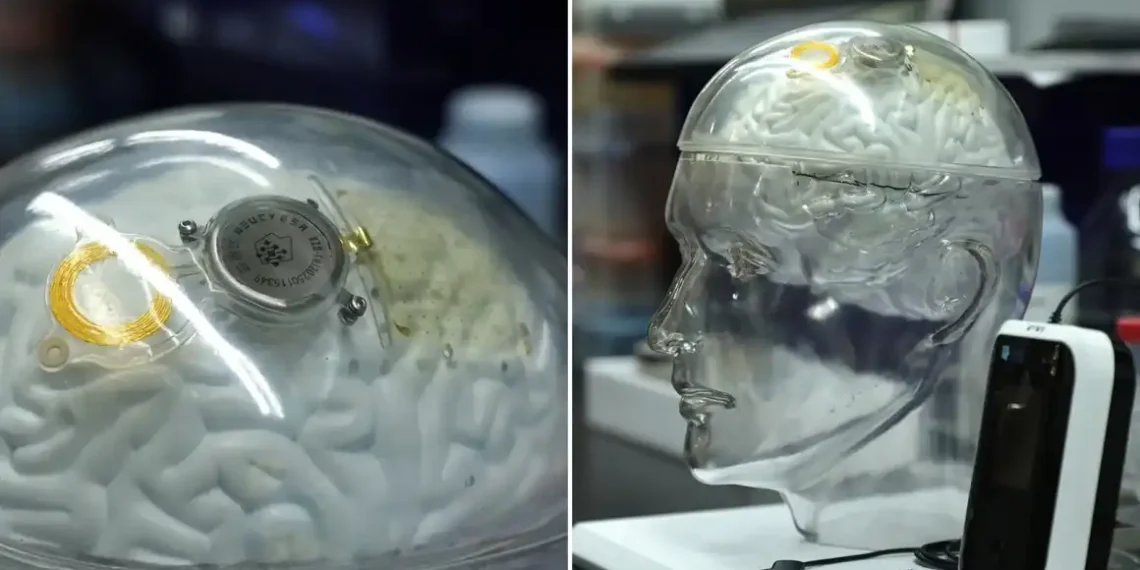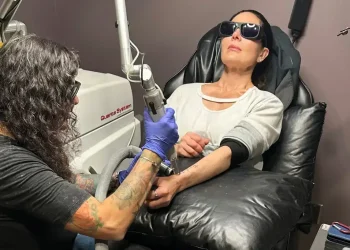China’s Brain-Reading Tech Is Catching Up Fast — Here’s Why That Matters
China Advances in Brain Technology, Rivals U.S. Leaders Like Neuralink
China is quickly making strides in brain-computer interface (BCI) technology, a field once led almost entirely by U.S. companies like Elon Musk’s Neuralink. A recent trial in Beijing shows how far the country has come — and why global attention is shifting.
In a public hospital in Beijing, a 67-year-old woman with ALS (also known as Lou Gehrig’s Disease) was able to “speak” using only her thoughts. Her brain signals were translated into Chinese text on a screen using a chip implanted in her head. It’s part of a growing race in brain technology, one that has big implications for science, medicine, and even global competition.
What Is Brain-Computer Interface (BCI) Technology?
BCI allows a person’s brain signals to control computers, machines, or text displays — often with the help of a small chip implanted in the brain. This kind of tech has the potential to restore communication for people with neurological diseases, like ALS, who can’t speak or move.
In the U.S., companies like Neuralink and Synchron have led the way. But now, Chinese researchers are making fast progress of their own.
The Beinao-1 Chip: A Breakthrough in China
The chip used in the Beijing trial is called Beinao-1, developed by a team led by Luo Minmin, director of the Chinese Institute for Brain Research (CIBR). The chip is wireless and about the size of a coin. So far, it’s been implanted in five patients as part of ongoing clinical trials.
In one case, the chip helped an ALS patient express basic sentences, something she hadn’t been able to do in years. Luo said the system has shown “high accuracy” in reading and translating brain signals into text or device commands.
“The patients were saying that this feels so great, like they can gain or regain the control of their muscles,” Luo told CNN.
The team plans to expand testing to 50 to 100 more patients within the next year.
How Does This Compare to U.S. Efforts?
So far, Beinao-1 has matched Neuralink’s five human trials. Another U.S. company, Synchron, backed by Jeff Bezos and Bill Gates, has tested its chip on ten patients in the U.S. and Australia.
According to Maximilian Riesenhuber, a neuroscience professor at Georgetown University, China is no longer just catching up — it’s becoming a serious player in the field.
“China has definitely shown the ability to not just catch up, but also then be competitive,” he said.
In fact, Chinese research is now helping shape the future of BCI alongside U.S. breakthroughs.
Different Approaches to the Same Goal
The Chinese team is using a semi-invasive method, meaning the chip is implanted just outside the brain’s protective covering (called the dura mater). This approach is less risky than fully invasive methods, which are more common in U.S. trials, but may provide slightly less precise data.
Still, experts say the Chinese method seems to work well.
“It is interesting to see that NeuCyber is apparently able to get enough information even through the dura,” Riesenhuber noted.
The Beinao-1 system has now gone through five human trials, and developers describe it as part of the world’s first batch of semi-invasive, wireless BCI implants.
Why This Matters for China — and the World
BCI is not just about medical benefits. It’s also part of a broader competition between the U.S. and China in advanced technology. Chinese leader Xi Jinping has made tech development a national priority, calling it the “main battlefield” of global competition.
In 2014, China began planning a national brain research project to match efforts in the U.S. and Europe. The field got a further boost when brain tech was included in China’s national five-year plan starting in 2016.
“Brain science is new in China… but its speed of development has been faster than other countries,” said Lily Lin, a former assistant at a top Chinese neuroscience lab.
Today, China’s BCI research is backed by strong government funding, ethical guidelines, and local support from cities like Beijing and Shanghai.
The Global Market Is Growing Fast
According to Precedence Research, the brain tech market was valued at $2.6 billion in 2023, and is expected to grow to $12.4 billion by 2034. That growth is attracting global investment — and competition.
In the U.S., the Obama-era Brain Initiative, launched in 2013, invested over $3 billion into brain science research. Since then, U.S. institutions like UC Davis Health have developed systems capable of decoding speech with 97% accuracy in ALS patients.
China’s Research Gaining Ground
In a 2024 report from Georgetown University, researchers said China’s non-invasive BCI work is now comparable to efforts in the U.S. and U.K. While invasive research started later, it’s catching up quickly.
“China’s invasive BCI research… is approaching global standards of sophistication,” the report said.
Still, the differences between Beinao-1 and Neuralink show how various countries may take different paths in developing this technology.
Not a Zero-Sum Game
Luo, who studied neuroscience in the U.S., says that comparing the two systems is like comparing “apples and oranges.” They work differently, target different areas of the brain, and use different types of data.
“All in all, I don’t think these two products are in a competitive or exclusive relationship,” he said. “The jury is still out… We don’t know yet which route will ultimately benefit patients better.”
Final Thoughts
As brain-computer interface technology continues to grow, both the U.S. and China are pushing the boundaries of what’s possible. For patients with conditions like ALS, the progress is promising — and potentially life-changing.
At the same time, the race for innovation is shaping the future of global tech leadership. Whether led by Beijing or Silicon Valley, the next big leap in brain tech may be just around the corner.
This article was rewritten by JournosNews.com based on verified reporting from trusted sources. The content has been independently reviewed, fact-checked, and edited for accuracy, neutrality, tone, and global readability in accordance with Google News and AdSense standards.
All opinions, quotes, or statements from contributors, experts, or sourced organizations do not necessarily reflect the views of JournosNews.com. JournosNews.com maintains full editorial independence from any external funders, sponsors, or organizations.
Stay informed with JournosNews.com — your trusted source for verified global reporting and in-depth analysis. Follow us on Google News, BlueSky, and X for real-time updates.














